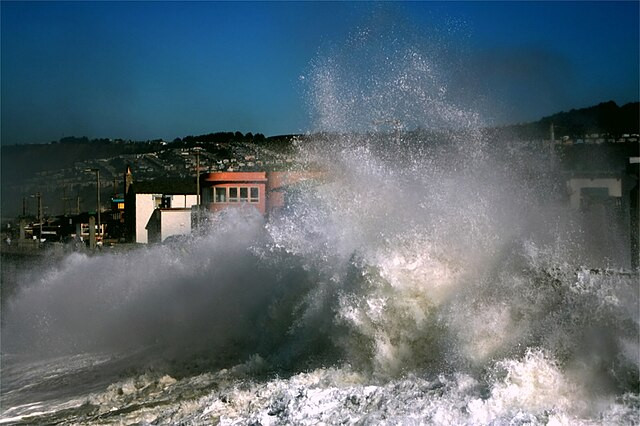California is currently grappling with a severe atmospheric river storm that has already brought significant rainfall, powerful winds, and caused widespread disruptions across the state. As of Sunday, more than 800,000 residents are without power, facing the compounded threats of "life-threatening" flooding, mudslides, and infrastructural damage.
The National Weather Service has issued a Level 4 of 4 risk of excessive rainfall for parts of Southern California, including Los Angeles, signaling an unprecedented threat of urban and flash flooding. Rainfall rates reaching up to an inch per hour are expected to deliver a total of 3 to 6 inches of rain across the affected areas. The broader coastal regions of California, encompassing San Francisco, are under a Level 3 risk, emphasizing the extensive nature of this storm.
Los Angeles Mayor Karen Bass, during a Friday news conference, likened the storm's potential impact to that of Tropical Storm Hilary from the previous August, underscoring the severity and urging residents to adopt "common sense precautions." The city could witness almost a year's worth of rain in just the first week of February, adding to the urgency of the situation.
In response to the imminent threat, mandatory evacuation orders have been issued in several communities across Santa Barbara, San José, Los Angeles, and Ventura County. School closures and disruptions to daily life are anticipated as officials brace for the storm's full impact.
Further complicating the situation is the issuance of the first-ever hurricane force wind warning by the National Weather Service in San Francisco. Nearly the entire state, from Redding to San Diego, is under wind advisories or high wind warnings, affecting nearly 30 million people. The expected wind speeds of 40 to 60 mph, with gusts reaching up to 95 mph, are likely to exacerbate the situation, leading to more power outages and making travel "near impossible" in the mountains due to heavy snow and whiteout conditions.
Governor Gavin Newsom has declared a state of emergency in several Southern California counties, mobilizing a record number of emergency response assets. More than 8,500 personnel, including swift water and helicopter rescue teams, are on standby to address any incidents that may arise. The state is also taking proactive measures by prepositioning equipment and ensuring that resources are available to clear roads, provide shelter, and aid affected residents.
The atmospheric river's arrival follows another storm that had already saturated the state, setting the stage for potentially catastrophic flooding and landslides. Officials are urging residents to heed evacuation orders, avoid flooded roadways, and stay informed about the evolving situation.
As the state braces for the worst of the storm between Sunday and Tuesday, the focus remains on safeguarding lives and property. With the memory of recent wildfires still fresh, the risk of mudslides in burn scar areas adds another layer of concern. California's response to this atmospheric river will test the state's preparedness and resilience in the face of increasingly frequent and severe weather events, underscoring the broader challenges posed by climate change.






